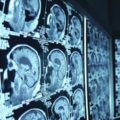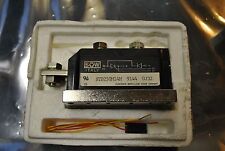
A chemical analysis of a rare, uncontaminated 4.5 billion-year-old meteorite that fell to Earth earlier this year shows that its composition sets it apart from other meteorites found on Earth, giving scientists a glimpse of the solar system that has not been seen before.
The findings, when added to other studies of the meteorite, may provide new information about the first moments of the solar system’s formation.
Purdue University chemist Michael Lipschutz, and his graduate student Jon Friedrich, have analyzed 45 chemical elements in a meteorite that fell to Earth into the wilds of northwestern Canada on January 18.
Chemically speaking, the meteorite, called the Tagish Lake meteorite, falls into a classification called carbonaceous chondrite. The carbonaceous chondrites are very rare and extremely interesting to scientists. These meteorites contain carbon as organic compounds, some of which are the basic building blocks for life, and interstellar material, which comes from exploded stars outside of our solar system.
The Purdue study shows, however, that some compositional and mineralogical features set the Tagish Lake sample apart from other carbonaceous chondrites, placing it into a gap between two subtypes of meteorites in that class.
Lipschutz says the oxygen isotopes in the sample place the Tagish Lake meteorite somewhere between the subtypes called CI and thermally metamorphosed CM, putting the sample in a class by itself.
“Thermally metamorphosed meteorites came from parts of their parent bodies that went through some type of major heating experience that caused some volatile elements to vaporize,” he says. “The fact that it’s not thermally metamorphosed means that this meteorite is much more closely related to the CI meteorites than to any other kind of meteorite.”
CI meteorites are considered a “measuring stick” of sorts in cosmochemistry, Lipschutz says, because they contain a chemical composition similar to the outside surface of the Sun.
“The Tagish Lake meteorite is, in fact, a sample of the pre-solar nebula, out of which the planets formed,” he says. “We have never before had a sample of this material.”
Purdue is among four research centers worldwide that were selected to perform laboratory analyses of the Tagish Lake meteorite. The studies focused on trace elements — chemical elements found in parts per million or parts per billion — which can be used to obtain information about the meteorite’s parent body and its history.
The findings, presented Thursday and Friday (8/31 – 9/1) at the Meteoritical Society’s annual meeting in Chicago, will be combined with other studies of the meteorite to present a more complete picture of the meteorite’s history. While the possibilities have researchers very excited, the meteorite’s true significance remains to be fully understood, Lipschutz says.
The studies at Purdue were completed using several analytical tools including an inductively coupled plasma mass spectrometer, or ICPMS. Friedrich, a doctoral candidate working with Lipschutz to chemically analyze meteorites, adapted the ICPMS to study meteorite samples. The ICPMS machine allowed him to complete his studies in a fraction of the time required by standard methods.
The Tagish Lake meteorite fell to Earth in January in a remote area between Atlin, British Columbia and Carcross, Yukon Territory. A week later, nearby resident Jim Brook found the meteorite fragments while driving home. He collected the samples using rubber gloves and kept them frozen to prevent contamination or degradation.
The meteorite is considered one of the best preserved samples from our early solar system, Lipschutz says.


















Comments are closed.